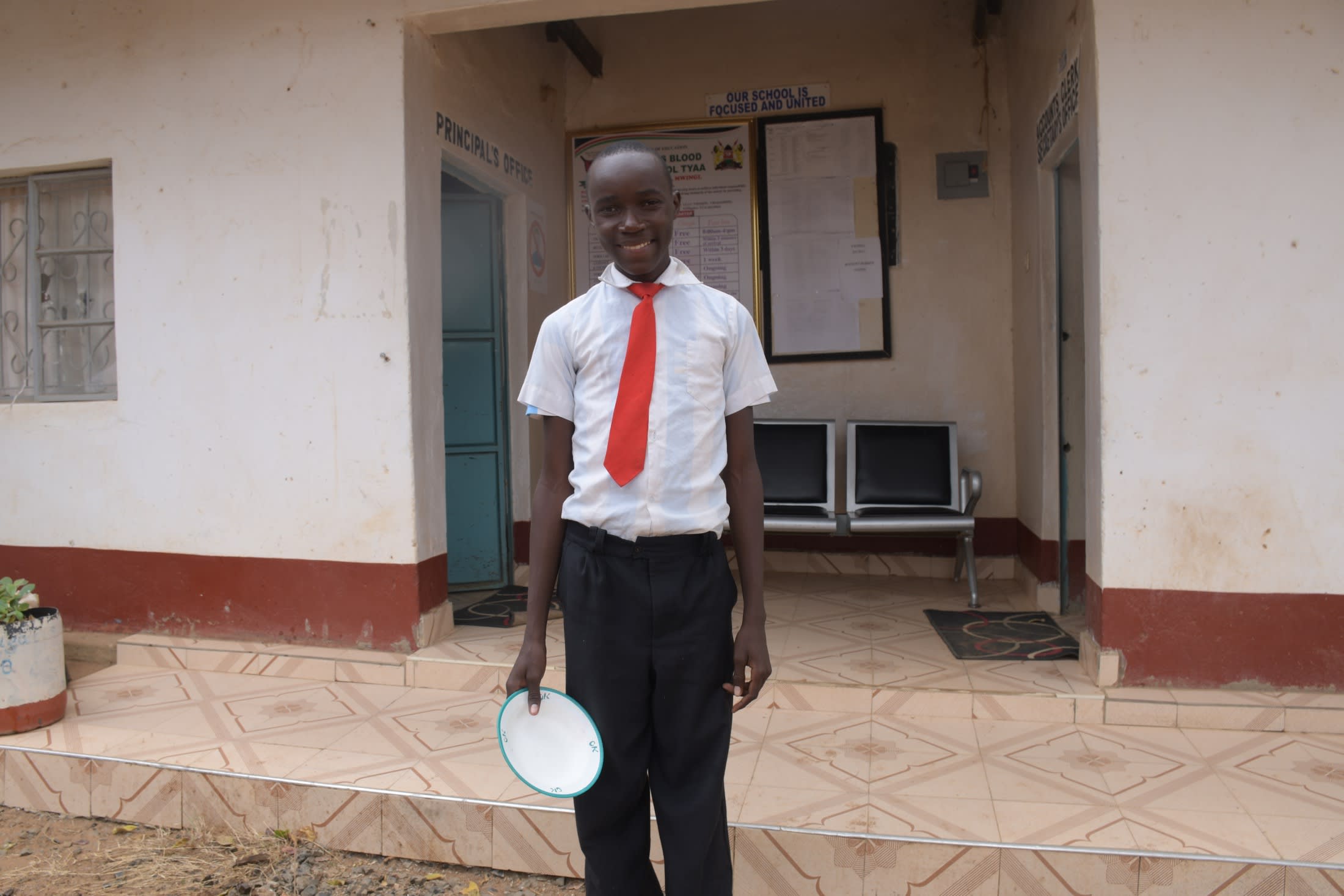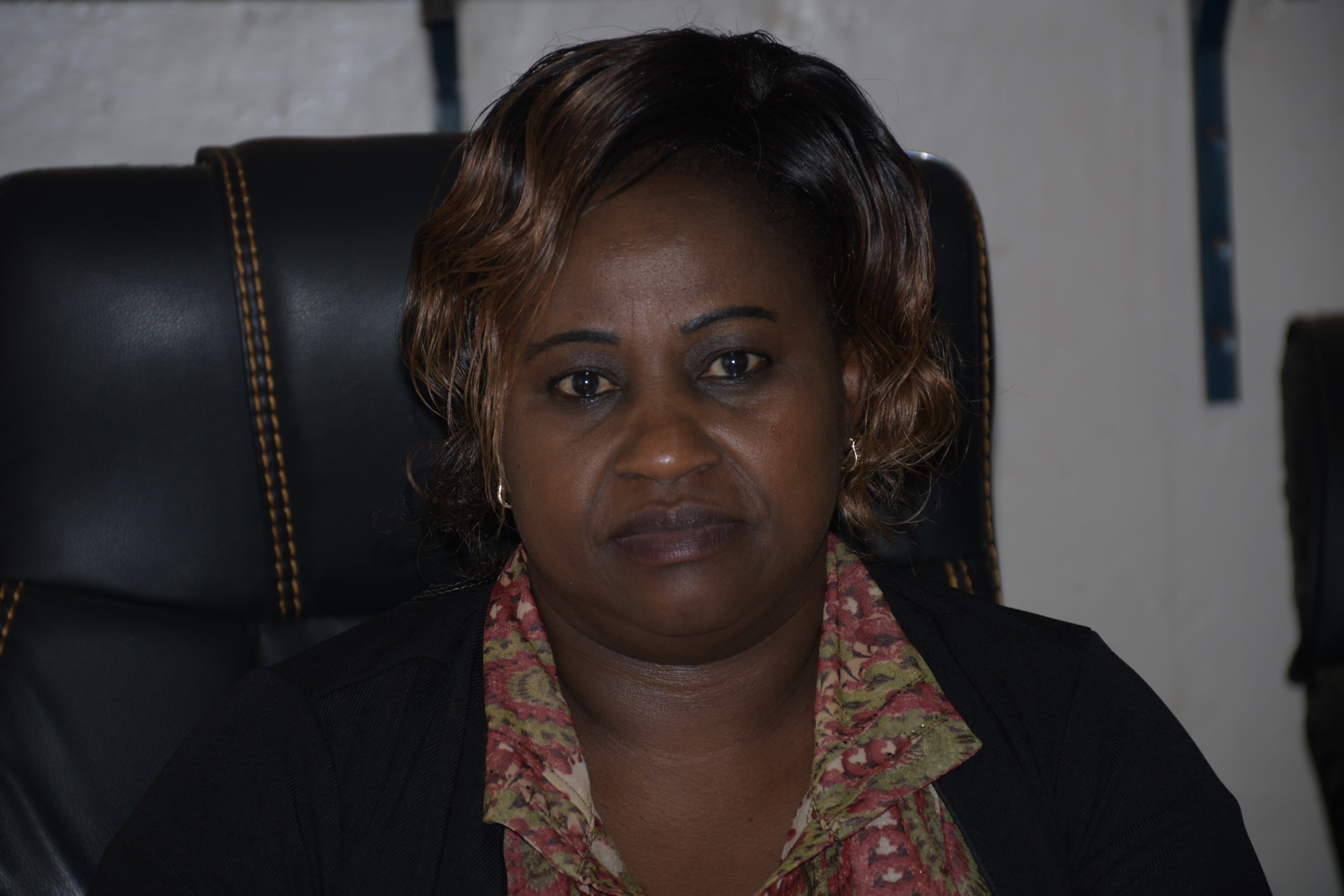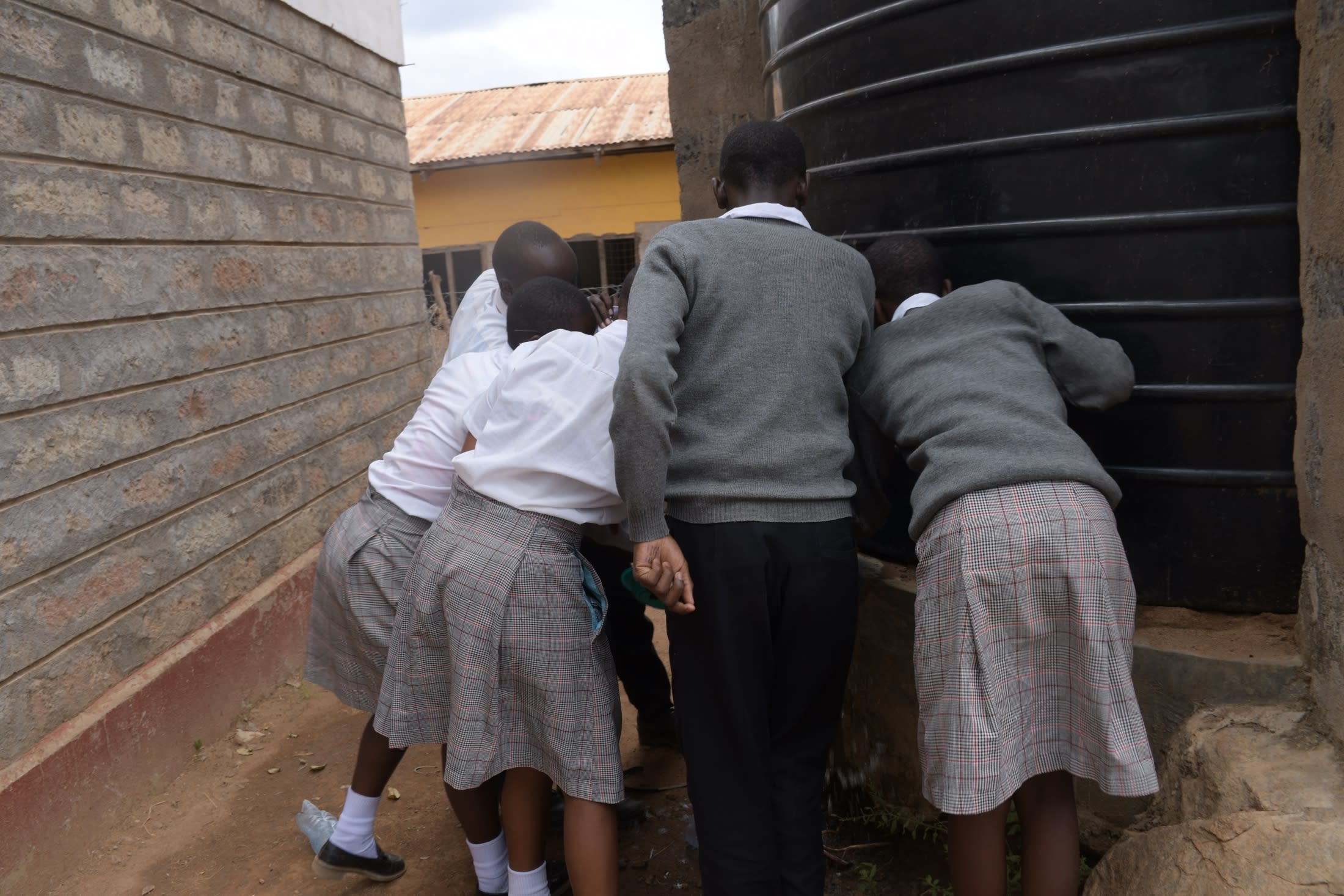Precious Blood Secondary School is adversely affected by drought and shortened rainy periods, which leaves them facing a daily water crisis.
The school's small rain tanks (which hold 30,000 liters total) are meant to provide adequate water for the 260 staff and students, but they cannot collect and hold enough water to last more than a few days. Without enough water to go around, students fight over any small container of water to prevent going thirsty for much of the day. Because there's no water to cook with, meals at the school are often delayed.
"When coming from lunch, we have to struggle for water, and you can end up not getting water," said 18-year-old student Noah M. (shown below).

When the tanks run dry, there are only two options. The school can either purchase water from a water boozer (delivery truck) or force students to carry water to school from dubious sources in the community. Both possibilities present significant challenges.
Purchasing water is costly and drains the school's meager resources meant for academic programs and improvements. Without strengthening those areas, the students suffer the consequences of less-than-ideal learning opportunities.
"When we have no water, it affects the school's schedule. Students sometimes go on strike because there is no water in the school," said 52-year-old headteacher Joyce Mulinge (seen above).

Mrs. Mulinge continued: "We spend so much on the water boozers, which strains the school's financial capacity. The available plastic tanks are not sufficient because of the large school population. [The tanks] easily break because of the scorching sun."
But for students to collect water and carry it to school requires so much of their time and energy. The task leaves students exhausted, missing valuable learning time, and everyone drinking water from unreliable sources that put their health at risk. Water-related illnesses are commonly reported and, sadly, keep students out of class.
"Water in the school is not enough, and we are often asked, like last term, to bring water from home, and most of my classmates come from far [away]," said Noah.
To top it off, the school's latrines and classrooms are rarely cleaned, creating an inhospitable learning environment where concentration is difficult.
The school needs a large water source that can provide enough water for everyone to drink, for meals to be prepared on time, for academic programs and school projects to move forward, and most importantly, for students to be in class learning instead of jostling for a position to collect water.

"The installation of the proposed 104,000-liter rainwater tank will ensure students have a nearby source of clean water. They will be no longer exposed to water-related infections like typhoid and amoeba," said field officer Alex Koech.
He concluded: "Students will be more attentive and comfortable in class because they will no longer have to carry water to school; thus, the school population and academic performance will improve. The school will also use the saved water expenses on other important activities like building better classrooms or washrooms."
Rain Tank
We will build a 104,000-liter rain tank for this school, making the others look tiny in comparison. Because of how rarely it rains in Southeastern Kenya, this tank's large volume is designed to store as much water as possible during the seasonal rains, making more water available through the dry months. This water will benefit the students, teachers, and supplementary staff.
Parents will mobilize the materials needed for construction, including sand, stones, and water. They will also lend their strength and time to help with the construction. We will complement their materials with a skilled artisan to lead the project in addition to providing the tools, lumber, metal, cement, and gutter system.
As soon as the tank has time to cure, it can begin collecting rainwater for the school's use.
Training
We will train students and staff on sanitation, hygiene, and other topics for 1 day. Those in attendance will form a school health club that will promote good hygiene and sanitation practices both at school and at home. They will learn all of the steps to proper handwashing, how to treat water, and how to keep their environment clean. The school will also be taught how to best oversee and maintain their new rain tank and handwashing stations.
Handwashing Stations
A total of 3 handwashing stations will be installed upon the project's completion and before training. These are 1,000-liter plastic tanks fitted with 3 taps each, allowing 9 students to wash their hands at once. The student health club and school management will be responsible for making sure the tanks are filled with water and that a cleaning agent such as soap or ash is always available.





 Rainwater Catchment
Rainwater Catchment
 Rehabilitation Project
Rehabilitation Project

























